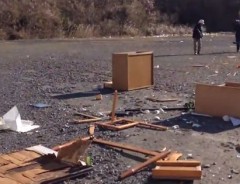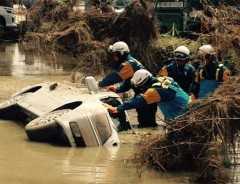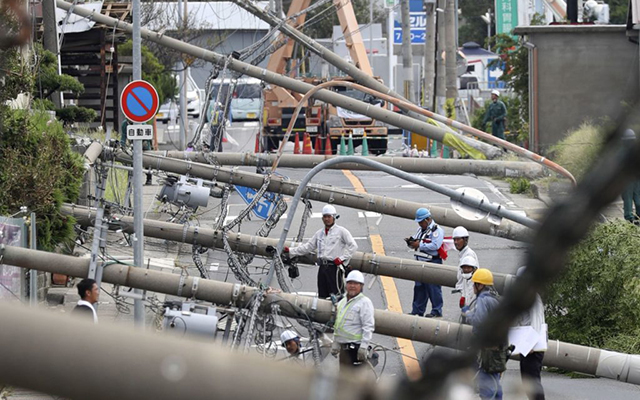- Source:
- © JAPAN Forward
- Tags:
- damage / Disaster / electricity / infrastructure / Typhoon / utility poles
Related Article
-

[VIDEO] Wind Speeds Of Up To 70 Meters Per Second! These Men Tested How Strong Typhoon Neoguri Is For Two Minutes
-

Tofu packaging can actually come in quite handy during a natural disaster
-

Recovering From A Disaster Is Difficult… But Help Is At Hand – And The Types Of Helping Hands Are Diverse
-

[VIDEO] Flood Wall Collapses In Ibaraki, Japan Causing A Havoc
-

What dog owners should do when a typhoon hits [manga]
-

The 2018 Japan Kanji Character Of The Year Is “Disaster”



The Sankei Shimbun, JAPAN Forward
Surprisingly, only 8% of the electric power lines throughout the 23 wards of the Tokyo Metropolis are installed underground. The recent experience of Tokyo’s close neighbor Chiba Prefecture highlights Japan’s vulnerability to electricity transmission during a natural disaster.
Typhoon Faxai triggered a massive blackout, mainly due to utility poles being destroyed beyond imagination by the typhoon’s powerful winds. Even after two weeks, the massive blackout across Chiba Prefecture could not be fully restored.
Experts have suggested that fundamental readiness measures for such disasters require the “disappearance of utility poles.” The government has also expressed intentions to speed up its plans to bury power lines underground.
The reality, however, is that Japan is falling far behind compared to major cities in regions such as Europe. As advanced as Japan’s infrastructure is in so many ways, why is the removal of roadside utility poles so sluggish?
2000 Utility Poles Damaged
Heavily tilted utility poles, electric cables dangling lifelessly and fallen trees blocking the roads… The operation to restore power in Chiba proved to be extremely difficult, with heavily tilted utility poles, electric cables dangling lifelessly and fallen trees blocking the roads… Recovery workers sighed wearily, saying, “We can’t see the end,” and disaster victims in the area were faced the severity of life with no electricity.
A 56-year-old restaurant owner in the Chuo district of Chiba City was forced to throw out food supplies in his refrigerator and freezer because of the power outage. Then, even though his power was restored in three days, it took him another two days to procure new food supplies because the power failure’s impact extended out to surrounding areas. “I’d like the power cables to be buried underground if damage like this can be prevented,” the man expressed.
Utility poles were damaged in various ways by the storm, including direct damage from strong winds and secondary damage by tin roofs or other objects blowing into them. The Ministry of Economy, Trade and Industry, estimated that approximately 2,000 poles had fallen.
Land, Infrastructure, Transport and Tourism Minister, Kazuyoshi Akaba, commented on plans to move forward with burying utility cables underground, pointing out that the country and utilities need to work hand in hand in order to prevent the recurrence of the extensive damage caused by recent natural disasters.
(...)
Written by Japan ForwardThe continuation of this article can be read on the "Japan Forward" site.
In the Land of Typhoons, Why Are Power Poles Slow to Disappear in Japan?